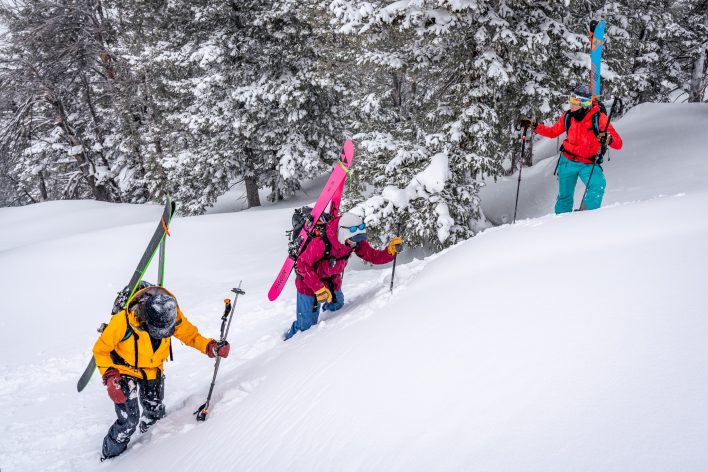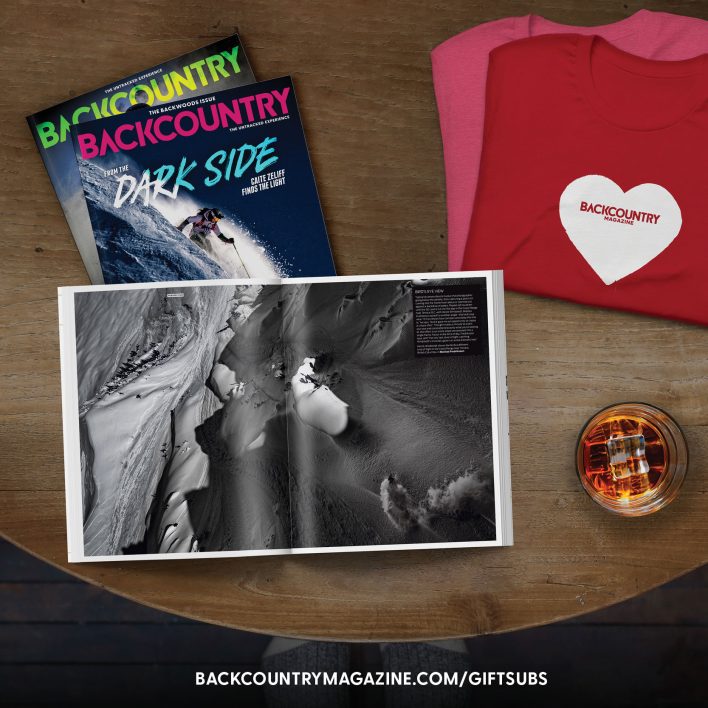This winter, avalanche education in the U.S. will be evolving. The old system of Level 1, 2, 3 will be replaced with two options: a recreational track and one geared toward professionals. The goal of the split is to deliver better, more focused courses to each user group. So how do you know which one’s for you? Here’s the breakdown.
Mountain Skills: Professional vs. Recreational Avalanche Training…what’s in it for me?
Early Season Snow: what it means for a mid-season snowpack

At this time of the winter, many forecast centers around the west are making note of a persistent problem and/or deep persistent slab avalanche problem in the forecast—a problem that, for some regions, has existed for multiple weeks or even months now.
Manageability Thoughts: Are you biting off more than you can chew in avalanche terrain?

Avalanche educator Sarah Carpenter takes a step back to evaluate what hazards are manageable in the backcountry, what what needs to be avoided.
Talking Risk: How to Better Understand and Communicate About Uncertainty

Traveling in the backcountry means moving through a constantly changing environment. Because of this, it’s important to communicate about uncertainty throughout the day. Sometimes decisions are easy and obvious. Sometimes they’re tricky. The one constant is that uncertainty will exist, so guide and educator Sarah Carpenter shares how we can effectively talk about risk.
Checklists, Beacon Checks and Route Planning: Building Systems as a Backcountry Traveler

Avalanche educator Sarah Carpenter knows consistency is the key to backcountry safety. With that in mind, she’s created a system to make sure her beacon is turned on, her plan is in line with the forecast and her entire group is on the same page.
Observation Overload: How to Prioritize Data from Pits, Weather and Snowpack

It can be hard to approach backcountry skiing like a scientist, especially on bluebird powder days, but taking a note from scientists can help us sort and prioritize information. A systematic approach creates practiced habits that improve our decision-making process. Additionally, it can allow us to understand which data to prioritize as we gather information on changing weather, snowpack structure and more. Here’s how.
Mountain Skills: Managing larger groups

The slinky—it’s not just a childhood toy; it’s also a ski-group phenomenon. It occurs when the last person in a large group finally arrives at the break spot, only to see the leaders of the group start uphill again. Traveling in larger groups can cause a variety of challenges and logistical problems, not just related to the slinky, too— think pacing, communication and differing goals for the day.
Mountain Skills: The dos and don’ts of quick pits

Balancing the need to assess snow stability on the skintrack while also making sure your partners don’t freeze can be a difficult task at times. To be safe in the mountains, you need to gather a lot of information on a variety of aspects and elevations, but spending an hour in a snow hole is less than appealing, especially in inclement weather.
Mountain Skills: Use a checklist to facilitate better decisions

If you’ve taken an avalanche class recently, you may have heard the quote, “The world of snow and avalanches is a wicked learning environment.”
Mountain Skills: Phone Frenzy

Given the range of possibilities cells phones offer, what are the best and safest ways to use them when headed out of bounds?











